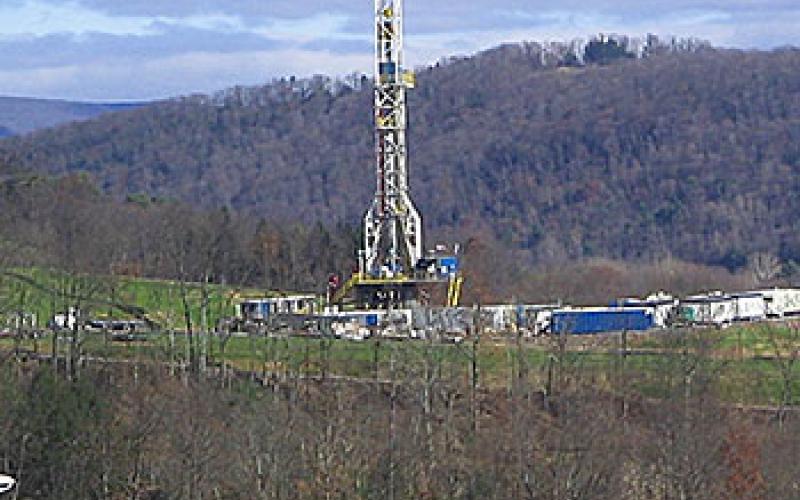Fracking fluids in the Marcellus: Does it mix with groundwater?

Fracking fluids in the Marcellus: Does it mix with groundwater?
The drilling process known as hydraulic fracturing, or fracking, requires the injection of specific mixtures of water, sand, and chemicals into the ground, a key concern around shale extraction. A recent study examined the movement of these fracturing fluids in groundwater.
Original Paper:
Kolesar Kohl, Courtney A., et al. "Strontium isotopes test long-term zonal isolation of injected and Marcellus formation water after hydraulic fracturing." Environmental Science & Technology 48.16 (2014): 9867-9873. DOI: http://dx.doi.org/10.1021/es501099k
The recovery of oil and gas through the hydraulic fracturing of shale formations has contributed to the steep drop in U.S. natural gas prices over the last several years and in many places is akin to a new gold rush. Across the U.S., there are dozens of shale "plays," the colloquial term for a shale layer with recoverable energy resources. The largest of these is the Marcellus Shale, which underlies parts of Pennsylvania, Ohio, New York, Virginia, West Virginia, and Maryland. The vast geographic extent and extractability of resources have made it a hotbed of drilling activity, with more than 7,000 active wells in Pennsylvania alone.
Hydraulic fracturing, or fracking, requires the injection of specific mixtures of water, sand, and chemicals, and the movement of this solution in the ground is one key concern around shale extraction. In a recent study, three researchers from the University of Pittsburgh and the Pittsburgh National Energy Technology Laboratory studied the movement of these fracturing fluids in groundwater. The Marcellus layer is generally on the order of 2,000 to 3,000 meters below the surface, and the key concern for the study team was the movement of fracturing fluids from the Marcellus into the upper layers, some of which interface with the surficial groundwater system. One particular element, strontium (Sr), is ideal to use as a tracer in aqueous systems because it is not typically affected by environmental conditions in the groundwater and it tends to appear in unique and identifiable concentrations. The team sampled dormant oil and gas wells (in the Upper Devonian/Lower Mississippian layers (UD/LM)) and one groundwater source in the vicinity of a Marcellus fracturing well before and during drilling operations for a period of roughly 15 months.
The results, published in the journal Environmental Science & Technology, were essentially positive for the continued separation of Marcellus fracturing fluid from the UD/LM above and the surficial groundwater system. The results show that the relative strontium levels in the UD/LM wells before and after fracturing activities are stable, suggesting little to no movement of fluid up from the Marcellus. Likewise, the groundwater samples indicated strontium levels between the Marcellus and UD/LM compositions and with slight intra-annual variability. Because the differences in composition and strontium ratios are extremely sensitive, and the adding 0.003 percent Marcellus fluid to the groundwater would yield a significant change, the team is confident in the results of the isotope analysis.
The principle takeaway from this study is that one of the many environmental concerns surrounding hydraulic fracturing may not materialize. The caveat to this claim is that any incorrect or defective well construction may leak fracturing fluids directly into the UD/LM and groundwater layers. While this was not the case at the test site, it is still a possibility at other wells. The good news is that properly constructed wells shouldn't introduce these materials into the groundwater system during normal operation. Of course, the lifecycle of fracturing fluid is much longer than just injection and recovery, and proper handling before and after use is equally, if not more, important to maintaining the safety of water resources.




